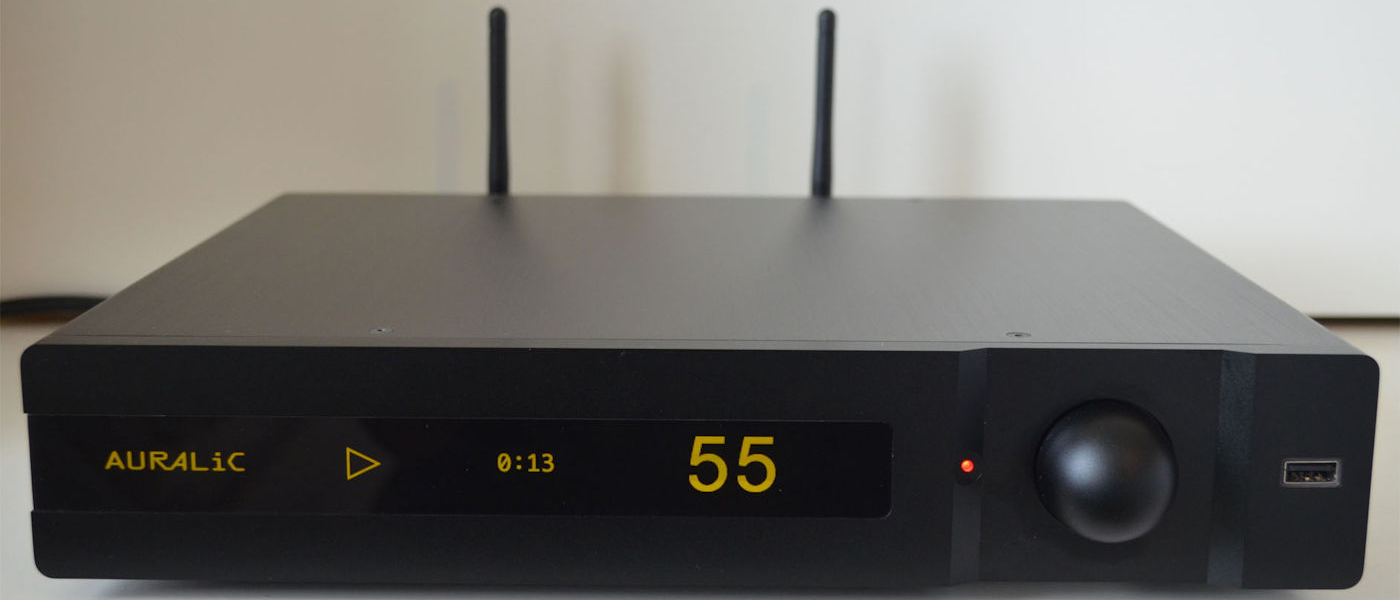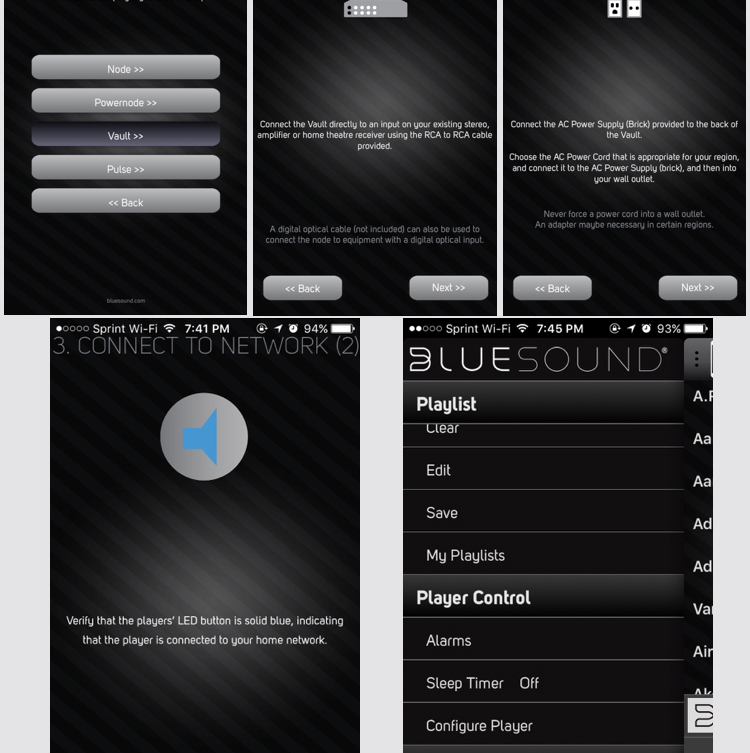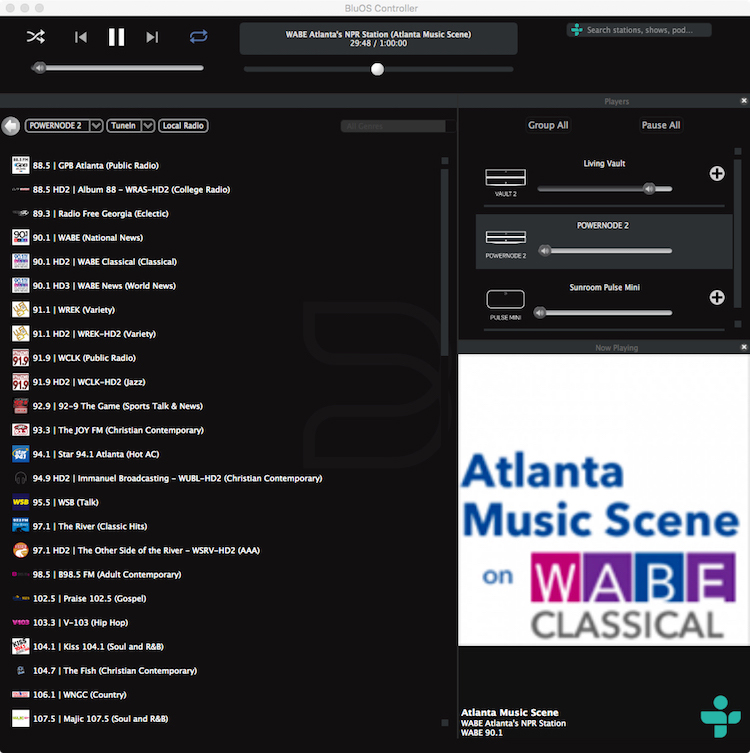However, the sound quality of wireless whole-home audio systems is all over the map. Also, their software varies greatly in both features and usability. Bluesound fixes both of these problems. Their finely-tuned components offer native high resolution audio up to 24-bit/192kHz. The BluOS music library management software is both powerful and intuitive.
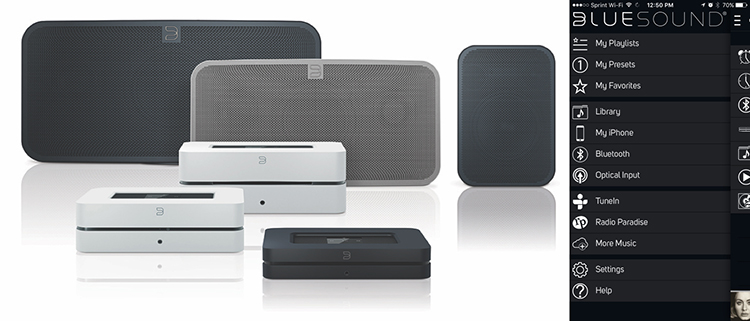
Bluesound Gen 2 Wireless Multi-Room Music System
- Elegant construction and soft-touch finishes
- Native high-resolution audio file capability
- Seamless integration of all components through BluOS apps for phone/tablet and computer
- Streams music over Ethernet, WiFi, or Bluetooth
- Vault2 has ample onboard storage for giant music libraries
- Pulse Mini offers plenty of output and smooth sound
- Powernode 2 has very low noise, and drives difficult speakers well
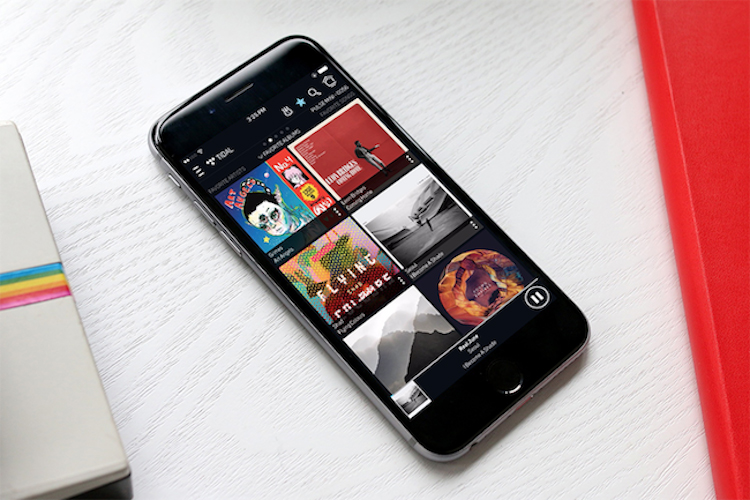
Bluesound and BluOS were my highlights from the grand opening of HiFi Buys in Atlanta last year. A full Bluesound setup drove KEF LS50 speakers, with spooky good imaging seated or standing. PSB founder Paul Barton also used BluOS to stream music from Tidal to NAD Masters Series electronics during his demonstration of his wonderful PSB Imagine T3 loudspeakers.
BluOS
Supported file formats:
Apple Lossless, AAC, MQA, AIFF, MP3, WMA, OGG, WMA-L, FLAC, WAV, HRA
Native Sampling Rates:
16-24
Mobile app for:
iOS, watchOS, and Android
Supported desktop operating systems:
OSX/macOS, Windows XP/2000/Vista/7/8
Supported cloud services:
WiMP, Slacker Radio, Qobuz, HighResAudio, JUKE, Deezer, Murfie, HDTracks, Spotify, TIDAL, Napster, Rhapsody
Free internet radio:
TuneIn Radio, IHeartRadio, Radio Paradise
High Resolution Track ID:
(Qobuz, Tidal)
Album art:
JPG format
Vault 2
DAC:
32-bit, 192kHz, 8x oversampling
Processor:
Dual-core ARM Cortex A9, 1GHz
Music storage:
2TB ultra-quiet hard drive with low power consumption
Signal/Noise Ratio:
110dBA
Distortion (THD+Noise):
0.005%
Network connectivity:
Gigabit ethernet (RJ45)
USB:
1x Type-A port for USB memory sticks and FAT32-formatted hard drives, 1x Type-B (mini) port for product servicing
Audio input:
BluOS over Ethernet, 3.5mm combo analog/optical jack, aptX Bluetooth
Audio output:
Analog RCA Stereo with FIXED option, coaxial and optical digital, subwoofer output (RCA), headphone jack (3.5mm)
12V:
Trigger Output
IR learning:
Remote Capability
Power consumption (idle):
22W
Dimensions:
8.7 inches x 3.5 inches x 7.55 inches
MSRP:
$1199
Powernode 2
DAC:
32-bit, 192kHz
Processor:
ARM Cortex A9, 1GHz
Power output:
60W/channel into 8 Ohms
Signal/Noise Ratio:
110dB
Distortion (THD+Noise):
0.020%
Network connectivity:
Gigabit ethernet (RJ45), 802.11b/g/n WiFi
USB:
1x Type-A port for USB memory sticks and FAT32-formatted hard drives, 1x Type-B (mini) port for product servicing
Audio inputs:
BluOS over network, 3.5mm combo analog/optical jack, aptX Bluetooth
Audio output:
5-way speaker binding posts, subwoofer output (RCA), headphone jack (3.5mm)
Power consumption (idle):
12W
Weight:
3.8 Lbs.
Dimensions:
8.7 inches x 2.75 inches x 7.5 inches
MSRP:
$799
Pulse Mini
Processor:
ARM Cortex A9, 1GHz
Frequency response:
45Hz-20kHz
Distortion (THD+Noise):
0.030%
Speakers:
2x50mm (2”), 1x 89mm (3.5”)
Power output:
60W tri-amplified, digital amplification
Network connectivity:
Gigabit Ethernet (RJ45), 802.11b/g/n WiFi
USB:
1x Type-A port for USB memory sticks, 1x Type-B (mini) port for product servicing
Audio input:
BluOS over network, 3.5mm combo analog/optical jack, aptX Bluetooth
Audio output:
3.5mm headphone jack
Power consumption (idle):
14W
Weight:
7.9 Lbs.
Dimensions:
13.2 inches x 6.8 inches x 6.1 inches
MSRP:
$499
Company:
SECRETS Tags:
Bluesound, streaming, media server, Bluesound, streaming, DAC/amp, compact integrated amp, integrated amp
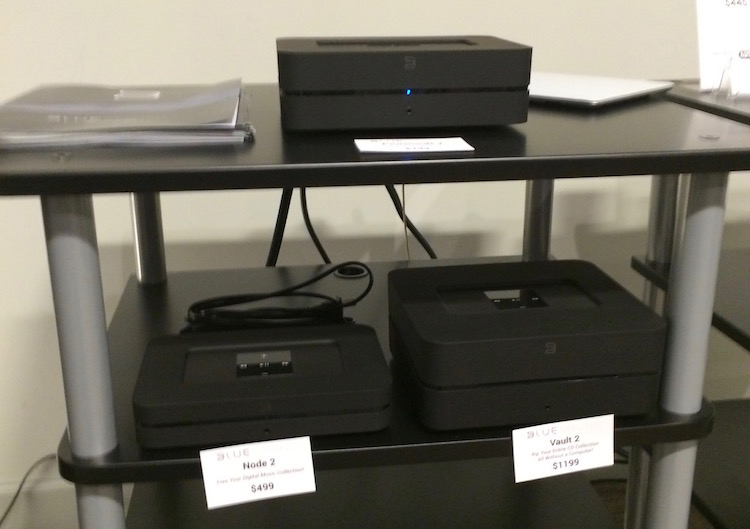
Bluesound is the hi-fi analog of a “supergroup.” They are one part PSB speaker engineering genius, one part NAD electronics expertise, and one part music lovers who understand that the greatest sounding components in the world are useless without intuitive software to stitch it all together. The Pulse Mini, Powernode 2, and Vault 2 in this review are second-generation Bluesound components. While there are both significant changes in appearance and improvements to performance in the second generation compared to the Bluesound Gen 1 components, I am told both generations of Bluesound components work together.
Bluesound sent me three components for this review: Vault 2 music server, PowerNode 2 integrated DAC-amp, and Pulse Mini all-in-one streaming system. 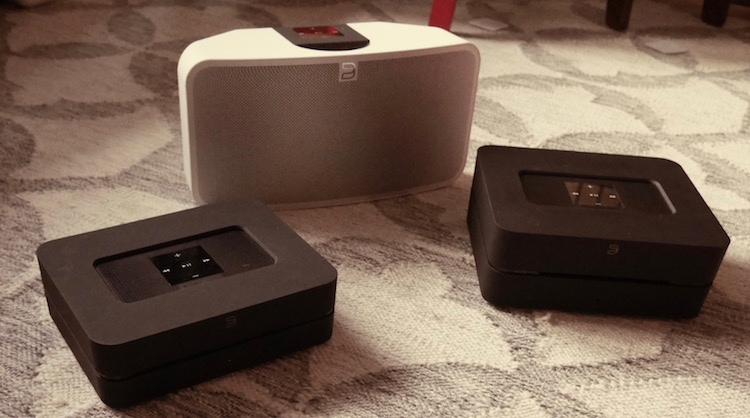
All of the Bluesound components have a common control interface, and 1GHz ARM Cortex A9 processors. They are designed primarily for use with the BluOS app, but they also have IR remote control capability and touch control on top for play/pause, track skip/back, and volume. The overall look and feel of the Bluesound components is refined elegance, with subtle curves and soft touch plastics in a trendy matte black.
Bluesound also caters to globetrotters. Each component has a universal power supply. Bluesound ships both flat and round power cords with each unit.
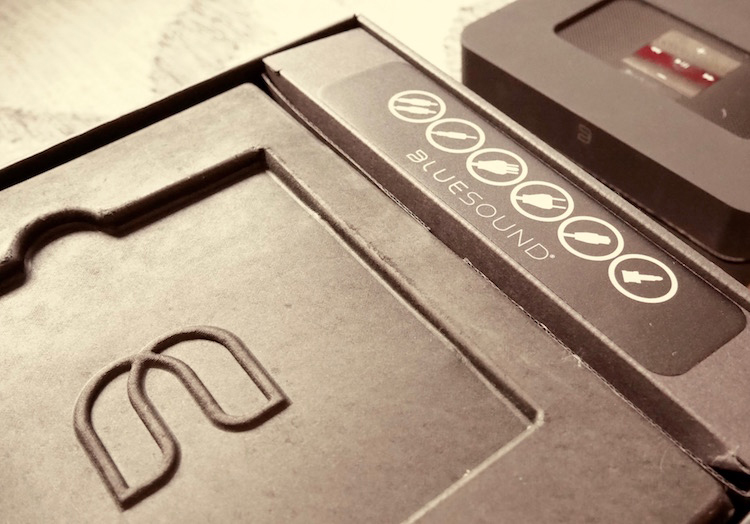
Bluesound’s BluOS unifies all components in the Bluesound ecosystem. BluOS is currently in Version 2.2. All of my initial setup occurred in version 1.x, as did most of my listening. In the current version, BluOS will even update all of your Bluesound components to the latest software or firmware with one click.
Secrets Sponsor
The BluOS app makes setup a cinch. The only thing you need to know is your WiFi network password! I went from “plug” to “play” in under five minutes.
The app allows unified control of all Bluesound components on the network.
When it comes to music, I am a little old fashioned. But just a little. While I’ve embraced computer-based storage and playback of digital music for a decade, I don’t use streaming music services such as Tidal or Apple Music. So while I tried several streaming services on BluOS and appreciated the ease with which I could find and play music on them, I can’t offer any detailed comparisons of their ease of use, etc., compared to other platforms.
Normally when I hear something I like, I buy the CD – and then import it into our music server in Apple Lossless format. Fortunately, Apple Lossless (“ALAC”) files play just fine in BluOS, as does every other format I’ve ever heard of. Notably, the latest release of BluOS includes support for MQA. Unfortunately, this update came after my audition, and I don’t have any MQA-encoded music to test anyway.
Secrets Sponsor
Adding my music library (stored on a networked Mac mini) into the Bluesound universe took some doing. This computer illiterate could not work his way through the 34 steps in Bluesound’s support document to share his iTunes library with the Bluesound components. But my computer ineptitude gave Bluesound’s crack customer support team a chance to show off. They set an appointment with me, took remote control of my Mac, and had my iTunes library set up as a network share in short order. The current BluOS version even offers in-app tech support.
The Vault 2 is Bluesound’s standalone music server and DAC. Bluesound optimized everything in both Vault 2’s hardware and software for the highest possible audio quality. Bluesound also optimized the Vault 2 for audio quantity! Its 2 TB hard drive will hold a lossless music library measured in months, not songs or even hours. For an indication of how much music fits on 2GB, double the the figures in the last column of the chart below.
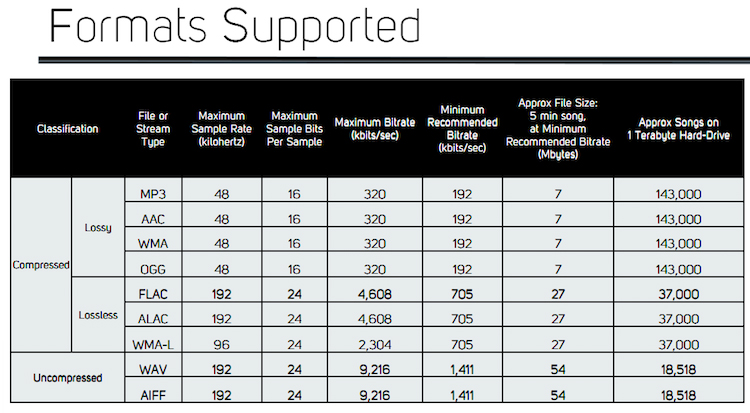
If you haven’t yet ripped your CDs to a hard drive, you can do so with the built-in slot-loading CD drive. Rips take some time, I assume because it runs extensive error-checks. It took me about 15 minutes to load Adele’s 24, for example, compared to just a couple minutes on a USB CD drive plugged into my MacBook Pro. The Vault 2 only rips CDs. I tried to rip a couple SACDs and DVD-As, without success.
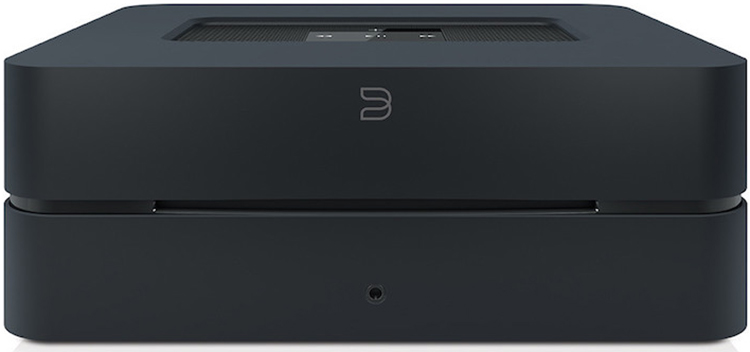
The Vault 2 also sports an analog input, so it can serve as a preamp for a system with server/streaming and a TV or a turntable with phono preamp. Like all Bluesound components, it also accepts Bluetooth. On the output side, the Vault 2 has an optical digital output to feed your DAC of choice. If you use the Vault 2’s built-in 32-bit DAC, Bluesound also provides a subwoofer output with a selectable 80Hz crossover. The Vault 2 is the nerve center of a Bluesound system, so it must be hard-wired to your network. No WiFi.
The Powernode 2 is Bluesound’s integrated streaming WiFi DAC-amp.
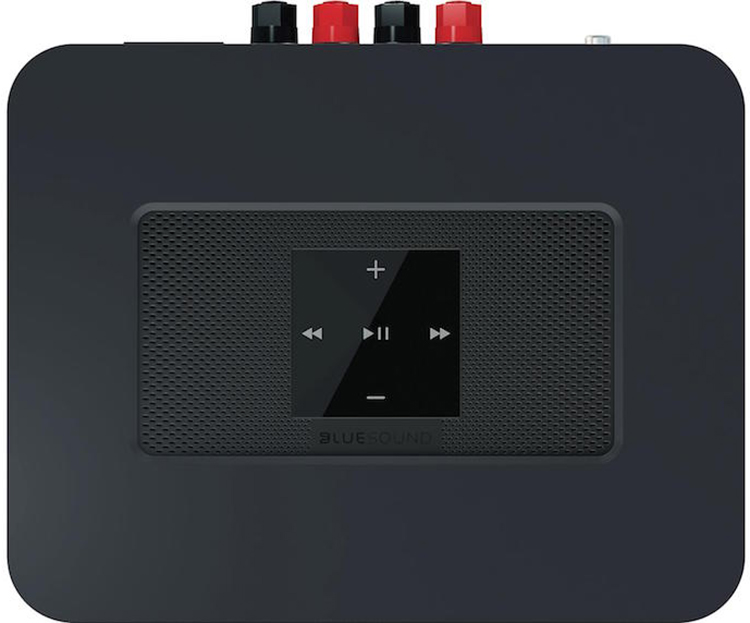
The Powernode 2’s built-in HybridDigital (Hypex) amplifier offers 60W per channel into 8 Ohms. It also has a 3.5mm headphone jack in front. The Powernode 2 can also accept Bluetooth streams and USB sticks, as well as wired connections through a 3.5mm combined line-in and optical jack. Like the Vault 2, the Powernode 2 offers a subwoofer output with selectable 80Hz crossover. Speaker terminals are multiway binding posts spaced to fit standard dual banana plugs. While Bluesound recommends hard-wiring the Powernode 2 over Ethernet for high-resolution streaming, it also has WiFi.

The Pulse Mini is an all-in-one unit.
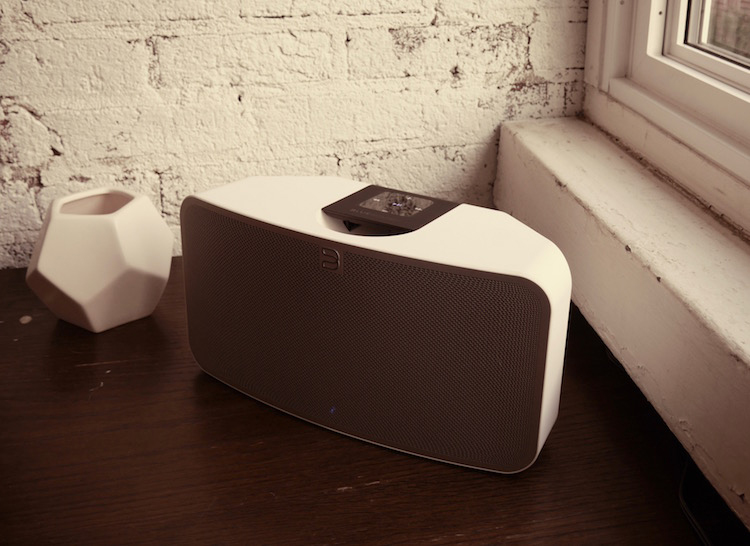
Bluesound equipped the Pulse Mini with DSP equalization and 60W of DirectDigital power-DAC for its three drivers: a 3.5” woofer and two 2” wide-range units in a twin-reflex cabinet. The Pulse Mini has an attractive form form factor, with a rounded grille, soft facets on the back side, and an elegant carry handle on top.
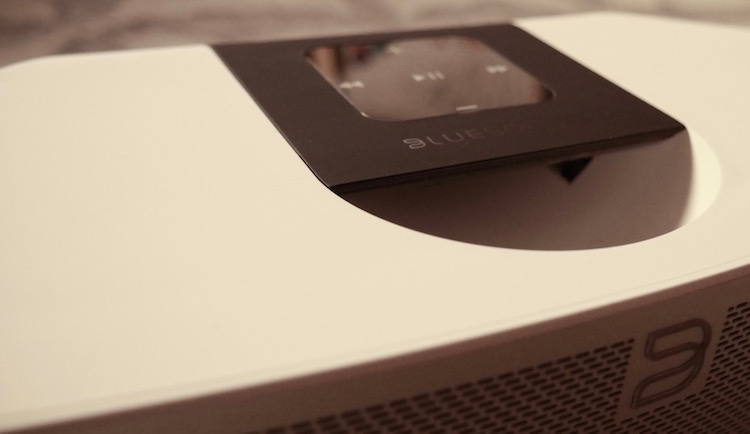
Bluesound equipped the Pulse Mini with the same inputs as the Vault 2 and Powernode 2: Ethernet, USB, and a 3.5mm combined analog/optical jack. The Pulse Mini even has a dedicated headphone amplifier, though the headphone jack is inconveniently placed on the back of the unit.
Because the Bluesound gear is so compact and easy to move around, I used each piece except for the Vault 2 in multiple locations. The Vault 2 had to stay in the main system, as that’s the only place we have wired network access.
I hooked up the Vault 2 to my main system’s Anthem MRX receiver using both analog and optical digital connections. Some people like to hook a high-end DAC into an AVR, though objectively that makes little sense: you use the DAC at the end of the chain anyway, and you introduce two unnecessary digital-analog conversions to the signal chain. It is a testament to the quality of both the Bluesound player’s DAC and the Anthem AVR’s ADC that I was not able to hear any degradation in normal use from the superfluous conversions. Both digital and analog connections sounded identical.
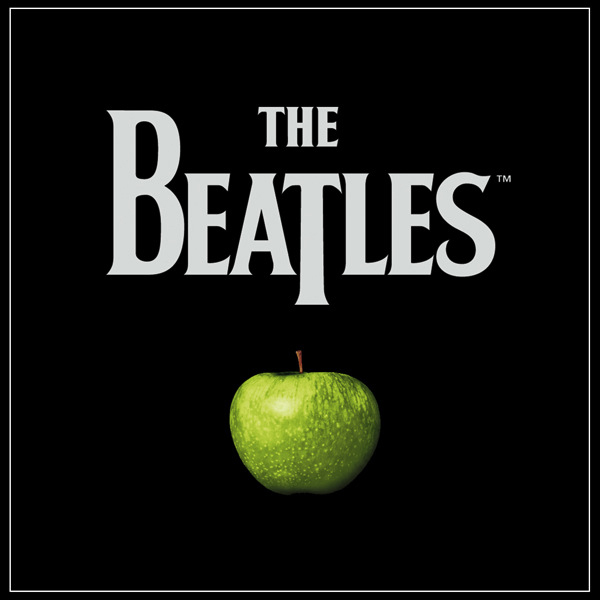
To test the Bluesound Vault 2’s high-resolution capability I plugged in The Beatles “Apple” USB stick to the Vault 2 and routed RCA cables directly from the Vault 2 into the left and right channels of my reference ATI amplifier. I was instantly impressed by the combination’s low noise floor. I couldn’t hear a whisper from the Tannoy Revolution XT 8F full-range towers’ concentric tweeters even with my ear touching the midrange cone. My favorite Beatles tracks, such as “While My Guitar Gently Weeps,” “We Can Work It Out,” and “In My Life,” flowed effortlessly into the room.
I auditioned the Powernode 2 on my desktop, and with two different speaker sets in our living room.
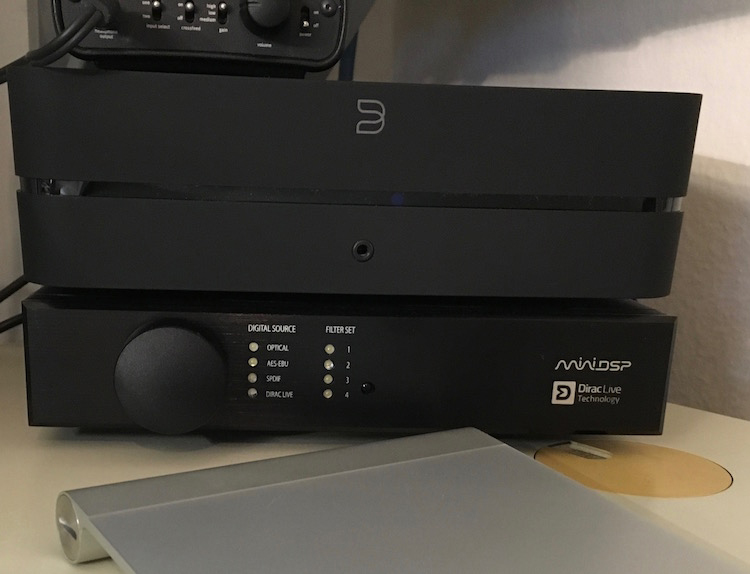
My desktop system is 2.1-channel, with custom closed-box satellites and a Triad Bronze subwoofer. The satellite speakers’ impedance drops below 4 Ohms right in the power region, about 150Hz. Also, they are fairly efficient (about 90dB/2.83V/1m) and only an arm’s length away. So they require electronics with a very low noise floor. The Powernode 2 provided a pitch black background, and had no trouble eking every bit of detail and punch from the speakers. The Powernode 2’s onboard bass management blended mains and sub pretty well, though not quite as seamlessly as Dirac Live in my reference desktop setup. Still, true subwoofer crossovers are rare in compact DAC/integrateds, so kudos to Bluesound for including this useful feature.
In the living room I set up the Powernode 2 with two sets of speakers: the aforementioned Tannoys and NHT’s Classic Three bookshelf speakers.
The Tannoys expose an amplifier noise floor due to their high efficiency, test low-impedance drive because they dip below 4 Ohms between 80Hz and 200Hz, and probe bass drive because their bass extends below 30Hz in room. The Powernode 2 passed this test, sounding identical to my reference ATI amplifier on every track I threw at it, at any volume level. The only coloration of note was uneven upper bass due to the loss of DSP room correction. This coloration showed that the Powernode 2 kept a firm grip on the Tannoy speakers down low, and allowed them to fully expose the bass issues inherent in acoustically small rooms.

The NHT Classic Threes present the most demanding test of any speaker I had available. Their impedance stays below 4 Ohms from 100 Hz to 400 Hz. They also eat current, with phase angles exceeding -45 degrees in the bass. On top of those issues, in my living room the speakers are 12 feet away, so Classic Threes need power to play loudly: their sensitivity is only around 85 dB/2.83V/1m. The Powernode 2 aced this test. Only when I played Shostakovich 10 at concert-hall levels did the Powernode 2 sound a little rounded off compared to my reference ATI amp (rated 200W/8 Ohms and 300W/4 Ohms). Remember, the Powernode 2 is rated as a 60W amp! I credit the Powernode 2’s NAD and Hypex heritage for this exemplary performance.
Of the three Bluesound components, the Pulse Mini impressed me the most. Of course the Bluesound Vault 2 and Powernode 2 offer considerably higher performance when driving high-resolution speakers, but my sonic expectations for them were very high. The Pulse Mini is smaller than a decent toolbox, yet always sounded pleasant and full-bodied. I tried it in a few spots, but it spent most of its time on an end table near a corner of the least acoustically-friendly room in our house: a sunroom with two glass walls, two brick walls, and a tile floor.
The Pulse Mini offered a rich and robust sound even in this harsh environment, with no frequency range standing out as overly emphasized or (except for the deepest bass) absent from the presentation. The Pulse Mini is good enough as a background music source that it might even be useful to have in the same room as the main rig, for when you want tunes but don’t need or want to fire up the whole system. A housewarming party, for example.
While I expected the headphone jack on the back of the Pulse Mini to be an afterthought, the Pulse Mini’s built-in headphone amp offered a detailed and punchy sound on my most-used headphones, NAD’s Viso HP50. The HP50s not only sound amazing, but also offer ergonomic genius: you can plug the cable into either earpiece! That brilliant feature mitigated the Pulse Mini’s inconveniently-placed headphone jack. The Pulse Mini’s onboard headphone amp also had enough voltage swing to drive my Sennheiser HD580 and MrSpeakers Mad Dog headphones to any level I desired.
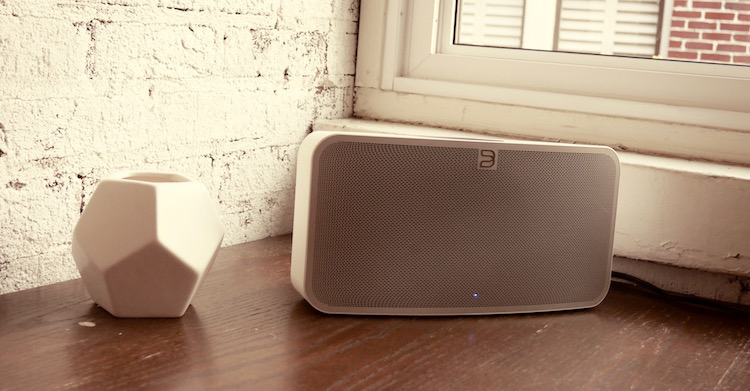
THE BLUESOUND WIRELESS STREAMING SYSTEM is the Audiophile’s Choice for Whole-home Streaming or Distributed Music.
- BluOS: Overall polish, ease of use, reliability
- Vault 2: Low noise floor, copious storage, input/output flexibility, bass management, clean styling
- Powernode 2: Low noise floor, powerful amplification, bass management, clean styling
- Pulse Mini: Sound quality, punch and output of a much larger speaker, great-sounding headphone amp, clean styling
- BluOS: Easier access to iTunes libraries on Macs
- Vault 2: ability to rip high-resolution content from SACD and DVD-A disks, 802.11ac WiFi
- PowerNode 2: a switch on the unit to select the hard-wired inputs
- Pulse Mini: headphone jack on top or the side of the chassis
I thoroughly enjoyed my time with the Bluesound components. Each piece has true audiophile grade performance in terms of noise levels and DAC quality. Bluesound also builds each component to a very high level of fit and finish. The Vault 2 can store all your music and then some, and it also makes a pretty nice preamp if you don’t have many analog sources. The Powernode 2 is also a really fine amp, and the Pulse Mini is the best extension speaker I’ve heard.
It is also worth repeating that NAD’s M12 preamp/DAC and C 390DD integrated DAC/amp both have optional BluOS modules. That means one could construct a reference-grade main system, and extend music to the rest of the house with Bluesound products. The combination will allow both unified control over BluOS, and native high resolution audio everywhere. While I didn’t have any NAD gear with BluOS in my own system, BluOS worked seamlessly in Paul Barton’s PSB Imagine T3 demo I mentioned earlier.
Additionally, Bluesound continually updated the BluOS app with added features (such as MQA support) and user interface refinements during my audition. I expect they will continue improving this already highly refined product. Overall, I found the Bluesound system to continually surprise and delight me with both its sonic prowess and its ease of use. Give it a chance, and I suspect it will surprise and delight you too.


